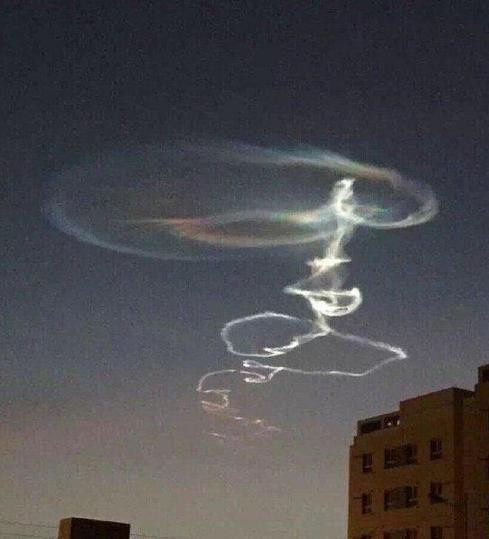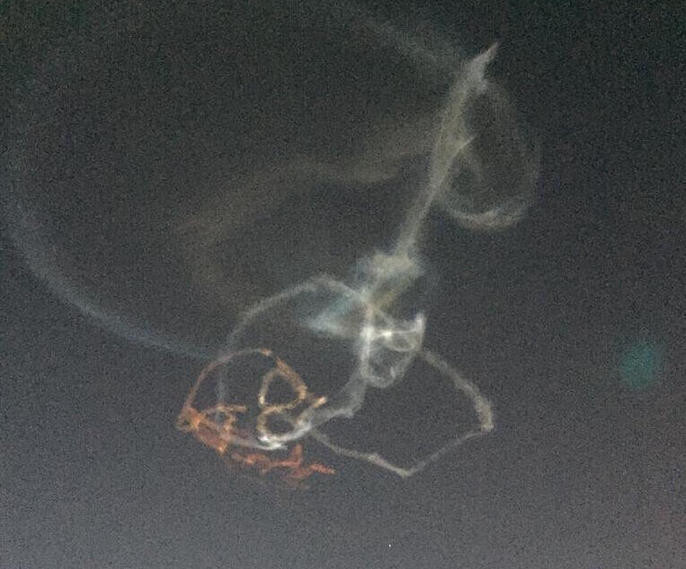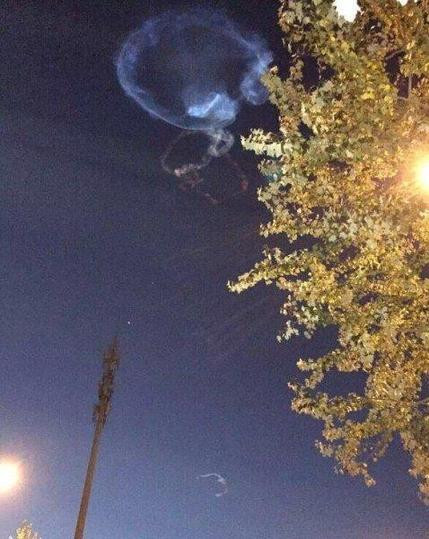Strange and eerie shining clouds appear above village in China's Xinjiang region
A strange and eerie phenomenon led to unusual lights appearing above the sky in China recently. People in Tuergen village, in the Xinjiang autonomous region, shared photos of the spectacle on social media site Weibo, with news outlets dubbing it a "miraculous astronomical phenomenon" that experts are yet to explain.
However, there are few things the shapes could be the result of. One is a phenomenon called noctilucent clouds (NLCs), while another suggestion is they came from a rocket launch from Gansu.
NLCs – also known as night shining clouds – hover over the edge of space and glow brightly in a variety of colours. A spokeswoman for the Royal Meteorological Society told IBTimes UK what was seen over China was could well be NLCs, but more information on the location and conditions leading up to their formation would be needed to understand more. They are also pretty unusual NLCs if this is indeed what they are.

NLCs are crystals of ice hovering on the edge of space, around 50 miles into the atmosphere. They are the highest clouds in Earth's atmosphere and are normally too faint to be seen. They also form under very restrictive conditions and are not fully understood – there is no record of them before 1885.
These ice crystals catch the sun long after it has set on the horizon. The shape of the NLCs changes according to wind speeds at different heights. Those located at lower altitudes tend to have a redder colour because of the amount of dust and water in the lower atmosphere, while those higher up tend to be blue.
However, NLCs are not the only possibility. Meteorologist Alan Hisscott told IBTimes UK they could be the result of a trail of cloud left behind a rocket launch. He said the photos were likely taken looking east from Xinyuan towards the Jiuquan Satellite Launch Centre in Gansu before dawn, which is what provided the illumination.

"The rocket exhaust would leave combustion products including water vapour which would condense to form ice-crystal clouds, much like the condensation trails behind aircraft," he said. "The distortion of the originally near-vertical trail would be caused by varying winds at different altitudes.
"The clouds appear to reach high levels – probably as high as noctilucent clouds, which is why they are illuminated by the sun beyond and below the horizon in much the same way that NLCs stand out against the dark sky."

He said the horizontal dispersion seen in the first image was likely at the mesopause – the minimum temperature at the boundary between the mesosphere and the thermosphere atmospheric regions. The "icy curtains" to the left of the formation were typical of "fall-streaks" observed from Cirrus ice-crystal clouds.
"Also the orange colouring probably arises from scattering of the illuminating sunlight rather like a 'mackerel sky' at sunset," Hisscott said. "The iridescence in parts of the trail is caused by diffraction by small water or ice droplets, occasionally seen in 'normal' clouds, or possibly by some very small droplets of unburnt fuel or other combustion products."
© Copyright IBTimes 2025. All rights reserved.






















